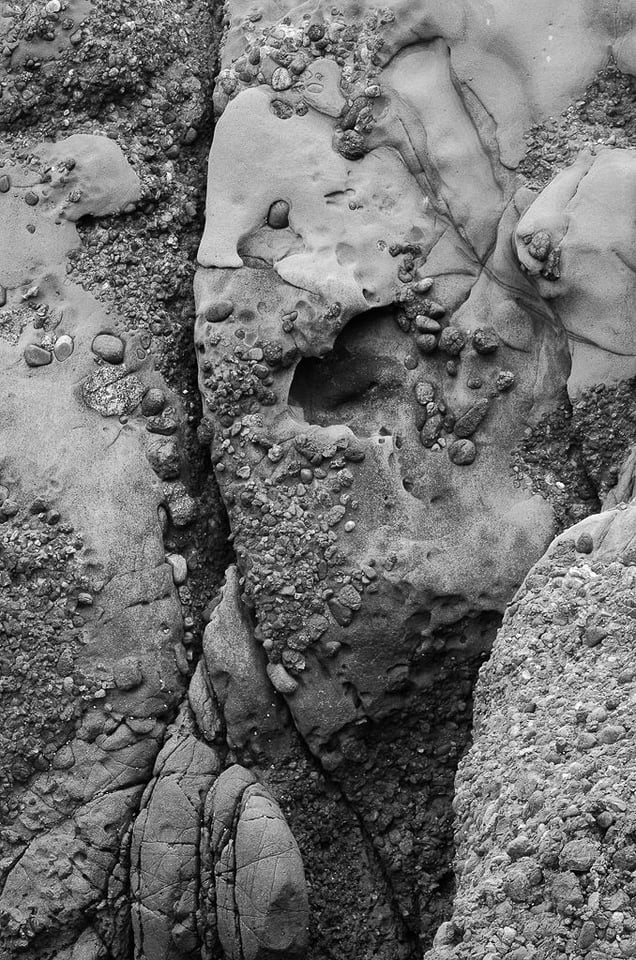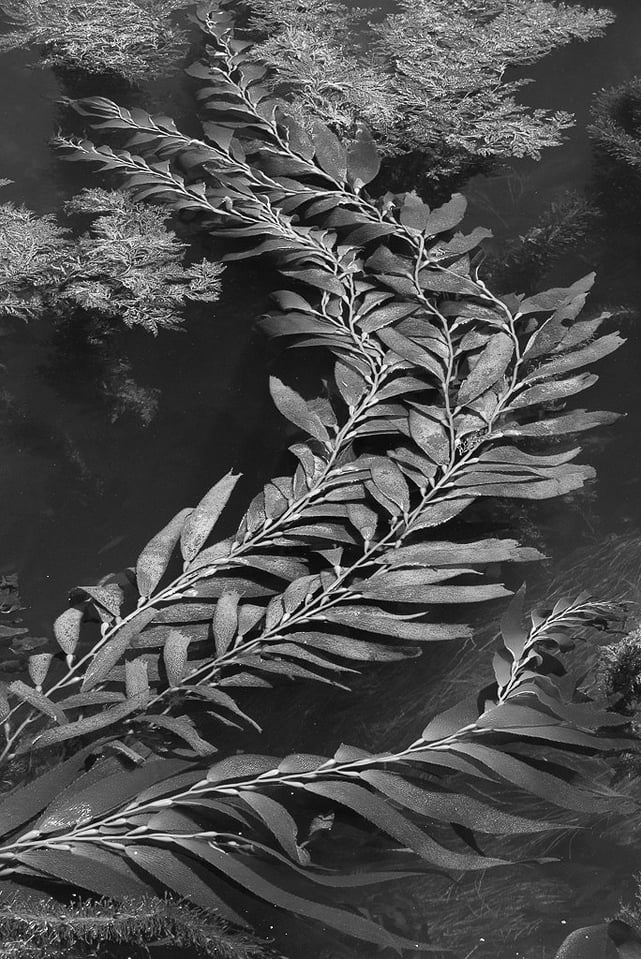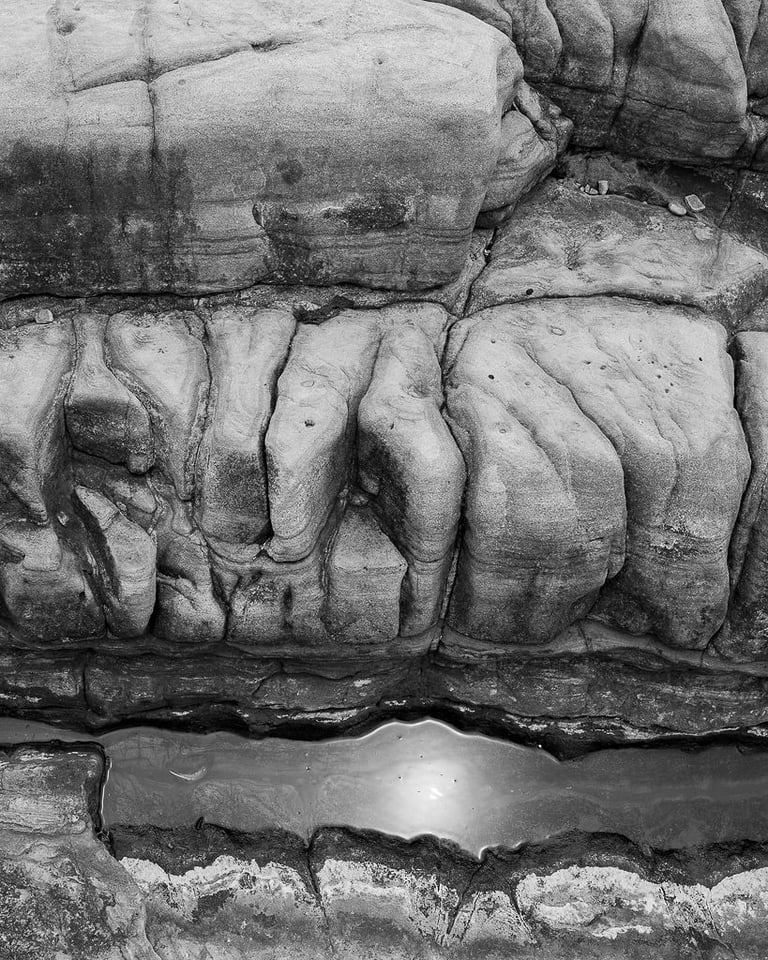She posed atop a sand dune with wind-gnarled cypress trees clinging to a rocky precipice in the distance. She was nude of course, and sitting on a bedpan. A dead pelican lay at her kelp-entwined feet. In one hand she held a nautilus, in the other the most sensuous bell pepper that had ever grown. As I adjusted my 8×10’s tilts and shifts she gave me that glance – just 1/60th of a second, but in that moment I knew there would be more tilting and shifting later as her aperture and my shutter speed would dance in perfect rhythm. I stopped the lens down to f/64, then…I woke up.
It was the Weston dream again – the one I’d had for decades. I needed to go to the Central California Coast and visit Point Lobos.
Thousands upon thousands of photographers have made this pilgrimage and snapped millions of photographs. Nevertheless, one photographer above all will forever be known as the person who put Point Lobos on the photography map. He was Edward Weston. Weston is famous for his black and white photos of shells and peppers and nudes and sand dunes and nudes on sand dunes. He even has a famous bedpan shot. But my favorite shots of his were always the rock detail shots from Point Lobos.
“The world is going to pieces and people like Adams and Weston are photographing rocks!” Henri Cartier-Bresson said that in the 1930s. Hey Henri, what about me? The real point here is that by shooting rocks and roots and seaweed and dead pelicans Weston was exploring new subjects and taking photography in a different direction.
Weston was one of the leading proponents of “Pure Photography” and I don’t mean he pre-ordered a Df. In the late-1920s and early-1930’s Pure Photography meant tightly composed, razor-sharp images with maximum depth of field that utilized the cameras ability to record detail in a way no painter could. Prior to the rise of the Purists, Pictorialists ruled the American photo scene. Embarrassed by their cameras (and their lack of painting skills), but desperate to be considered Artists with a capital “A”, the Pictorialists stuck to the classic subjects of the painting Masters and strove to make their photos look as much like paintings as possible. Imagine your friends playing wood nymphs prancing naked through the forest while you shoot with your Holga, apply instagram while scanning the negs, then print on rough matte paper and you’ll have yourself a Pictorialist image.
Weston was a founding member of Group f.64, a loose short-lived group of Purist Photographers from Northern California. Other notable members included Imogen Cunningham, Willard Van Dyke, and some dude named Ansel.
Okay I admit this one was more inspired by Adams “Surf Sequence” than by any particular Weston image. Nevertheless, the tide was coming in when I shot this and Weston was keenly aware of the tides, though in his case it was the tide of women who came in seeking his company.
But I digress. Back to imitating Weston, or at least his subject matter – kelp shows up in a lot of Weston’s Point Lobos shots. When it comes to shooting kelp I have an advantage that Weston didn’t have – a polarizing filter to cut glare off the water surface.
The “grand landscape” when a large amount of terrain and detail is recorded in one photo (as typified by Adam’s work), was not something Weston did much. He was more into the nature detail shots. Hey, I’ve got something in common with Edward. That said, I realize my grand landscapes are not my strong point and never will be if I don’t work on them. I like this one – it works in color or black and white, but as Weston rarely had access to color film (really only near the end of his career) I’ve limited my Point Lobos shots here to ones that do well in black and white.
Another advantage I have is the speed of my DSLR. Weston shot dead birds because it took a long time to set up his 8”x10” view camera (even though he boasted that he could set up the tripod and camera, compose the shot, insert the glass plates, cock the shutter and fire the shot in just two and a half minutes). This Striped Shore Crab held pretty darn still, so maybe Weston could have set up the shot, but as Weston’s film checked in at around ISO 16 equivalent, I’m guessing the shutter speed would not have been quick enough to freeze the weird bubbling coming from the crab’s mouth.
Hey these limpets aren’t moving at all. Nevertheless, I doubt this pic will ever sell for as much as Weston’s shell prints, one of which (Nautilus, 1927) went at auction for over a million bucks. Hey that’s over $400,000 more than Adam’s Moonrise over Hernandez went for. Speaking of low ISO, some of Weston’s still lifes such as his peppers and shells required exposures of several hours, yes hours.
A million bucks!?!?! Wow, Weston must have lived like a king. Well, sadly that wasn’t the case. He was pretty much a starving artist type. The most he ever got paid for a photo when he was alive was $250 per shot for seven color images he did for Eastman Kodak. Fifty years after his death, his Nude, 1925 sold for $1,609,000, one of the top ten highest amounts ever paid for a photo. You might want to bookmark this post – no telling how famous I’ll be after I croak.
In the mid-1940s, Weston was beset with Parkinson’s disease. The trembling in his hands made it increasingly difficult to use his view camera. In 1948 he went down to Point Lobos (he lived nearby at Wildcat Hill) and took his last photo – Rocks and Pebbles, 1948. Edward Weston died on New Years Day in 1958. His ashes were spread on the beach that now bears his name.












Hi John,
I’m headed up to Point Lobos in December…chasing the same Weston Dream. Do you have recommendations for good spots. Since time is at a premium for working class, wannabe photographers, I need to make the best use of it. Any tips and pointers would be greatly appreciated. Thanks!
-Osman
The photograph of Edward Weston is beautiful in contrast the effects used in black and white. He made beautiful photograph with his model Charis Wilson, too. Thanks, I will share this article.
Your composition is delicious to look at, if that makes any sense. It’s definitely Art with a capital “A”.
Great post and photos. Love your sense of humor, based on your knowledge of photographic history and quick wit, as per D810 the new 8 x 10 camera.
Makes for a great read. Thnaks and and many years of happy shooting.
Thanks Juan.
Thanks for doing a tribute to one of my inspirations from photo history. Adams is spectacular but the intimacy of Weston’s compositions was inspiring for me.
Thanks Bruce. I agree about Weston’s care in composition and use it as inspiration to work on my composition skills.
I guess I’m a troglodyte but I agree with Paul Simon: “Everything looks worse in black and white.” Well…that’s not entirely true but I think some of those photos would have looked better in color. Some photos look better in color, others in b/w, and still others look good either way. I just don’t understand the point of doing b/w merely for the sake of nostalgia.
I wouldn’t have commented but after so much praise, I figured someone needed to bring you back to ground! ;-)
I guess Paul Simon didn’t have Silver Efex Pro ;) Actually I don’t either, but my choice of images to convert to B&W for this was based on which ones I felt worked as good or better in B&W due to their patterns, texture, lines and such. I was picky about which images from Point Lobos I rendered in B&W and which ones I kept as color images (a few of which you can see in this blog post on my website if you care www.vermphoto.com.
When considering B&W, I look for really simple compositions where color will distract from the relevant elements or images of old subjects. I’d rather see a photo of an old tractor in B&W than in color.
looking at the actual colors from your blog’s images, you were very probably right to convert these to B&W.
Great images and writing, as usual.
Patrick, you just haven’t seen how beautiful B&W can be. Look up Hurrell and Weston, maybe Man Ray for more experiemntal stuff or Jerry Uselan for those nbeautiful pre-photoshopp compositional works that inspired my photoshop composite art.
I couldn’t find anything on Jerry Uselan but I checked out the others and they just didn’t do it for me. But that’s all to the good. If everyone agreed on what was great art or literature or, well, anything, it would be a terribly boring world. At the risk of sounding mundane, I DO like Ansel Adams’ photography. Thanks for trying to enlighten me. :-)
Great story and pictures to boot.
Thanks Ali.
Thanks Patrick!
Great stuff! Thanks for sharing.
I would love to visit this place one day. Great photos
Definitely put it on the life list Muhammad!